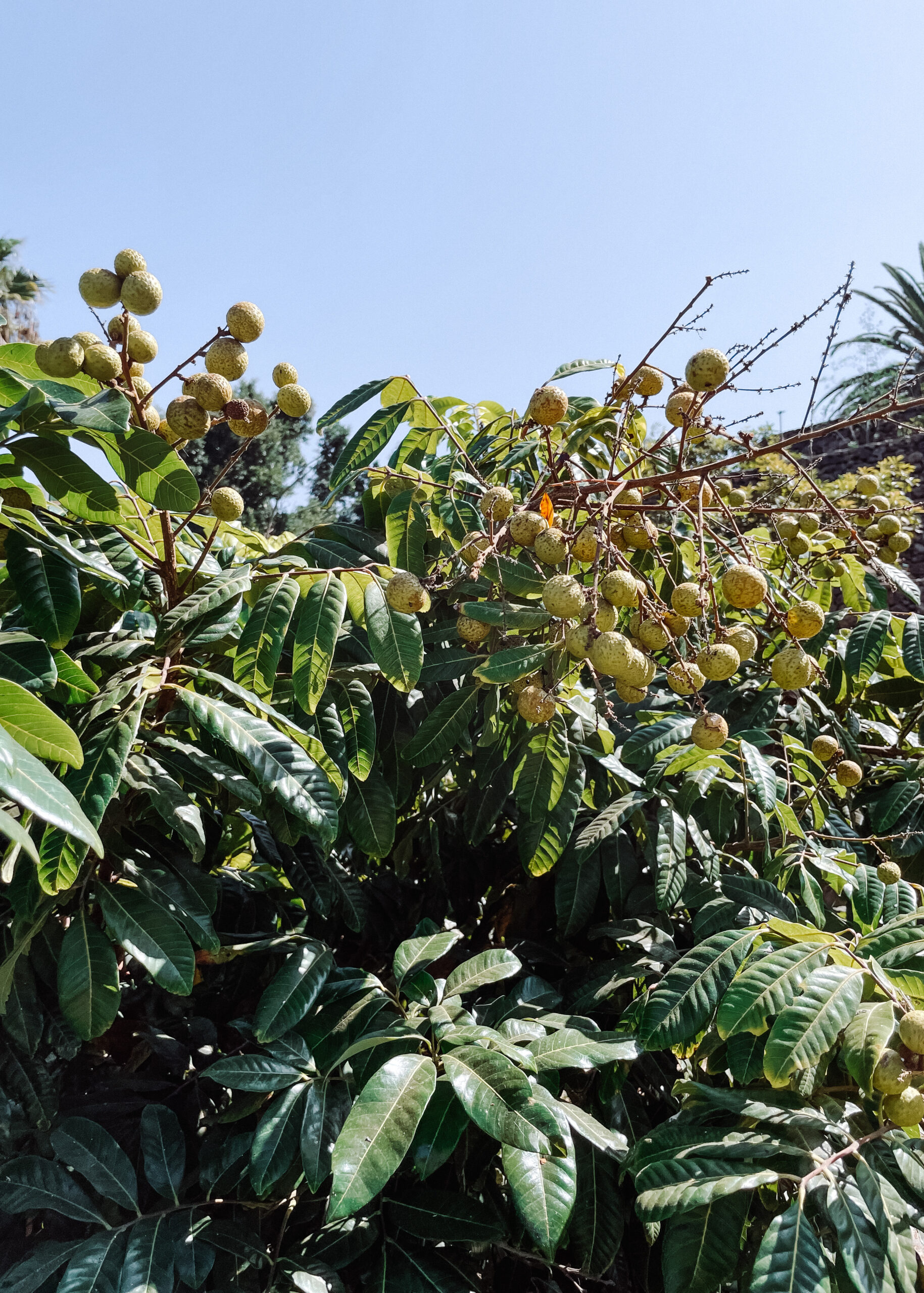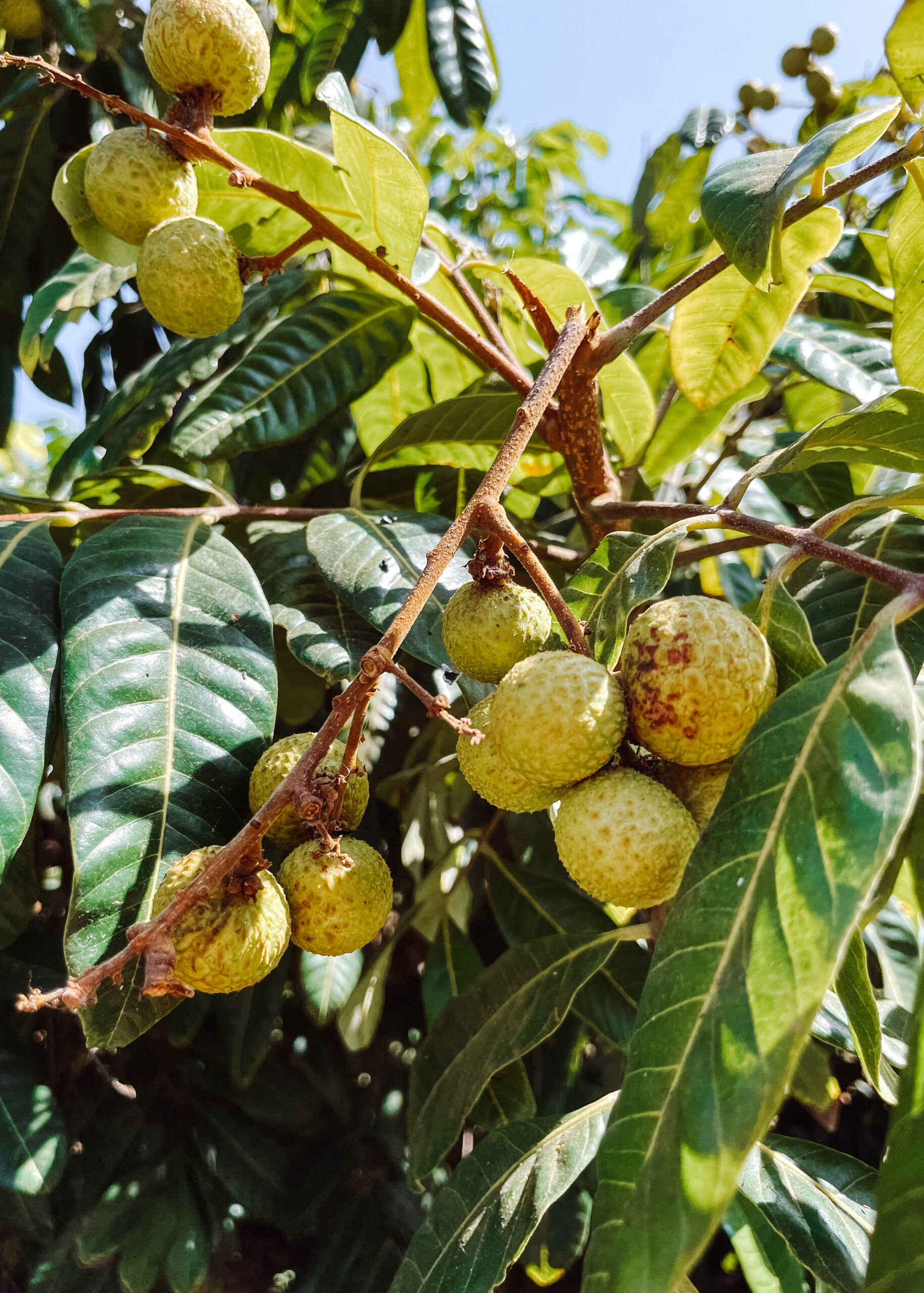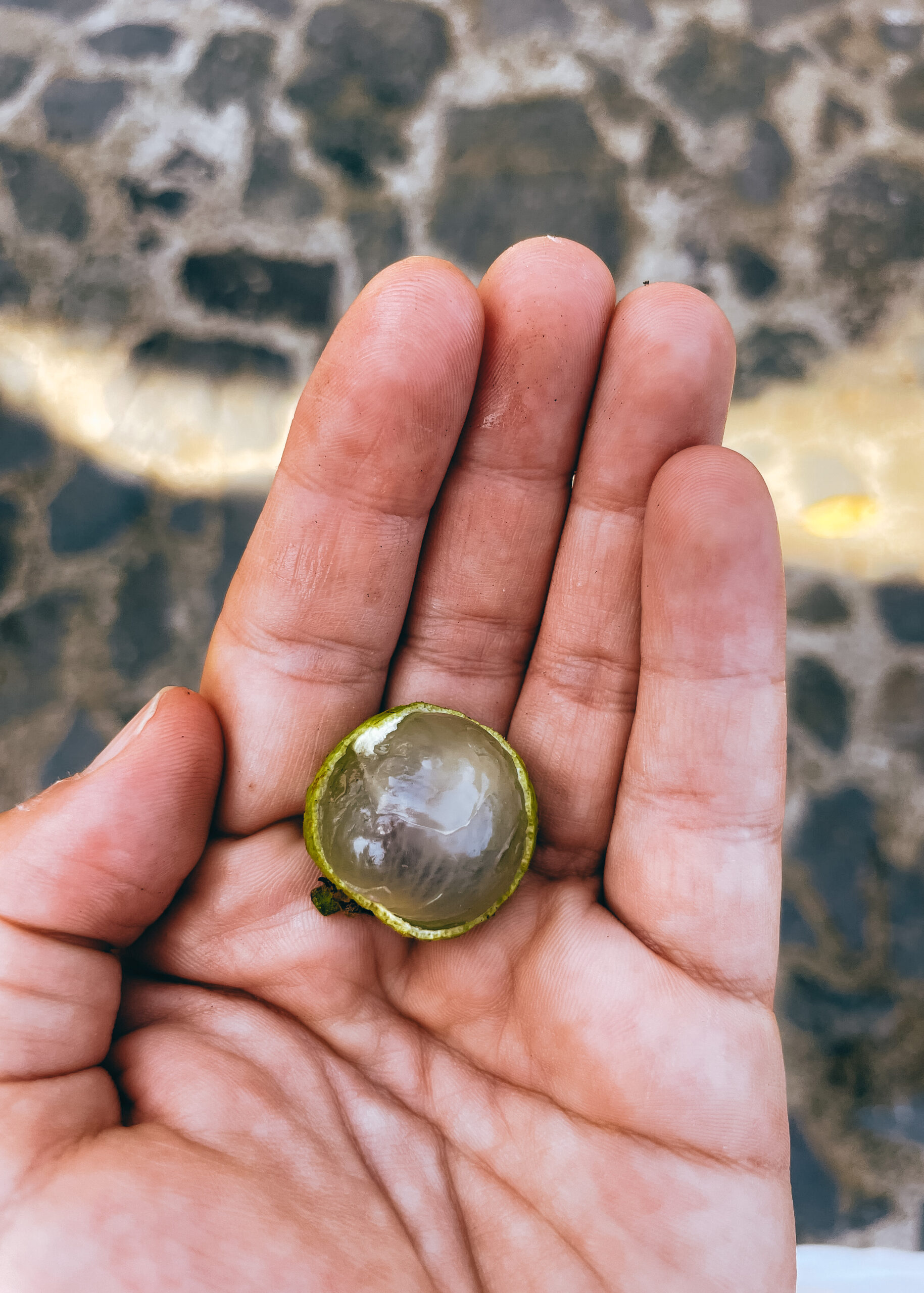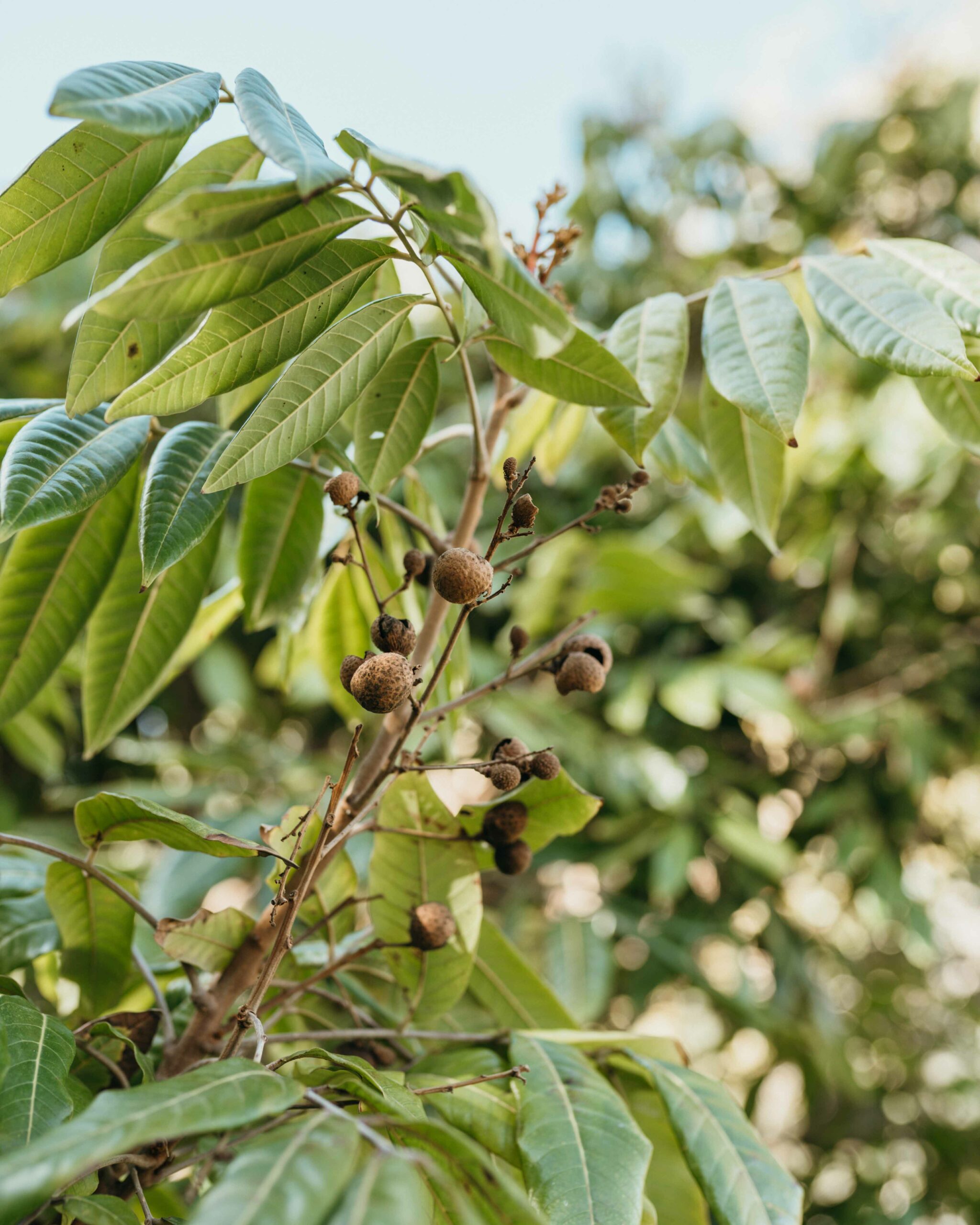Dimocarpus longan
LONGAN
Englische Bezeichnung: Longan
Spanische Bezeichnung: Ojo de Dragon, Longan
Familie
Seifenbaumgewächse (Sapindaceae)
Verwendbare Teile:
Frucht
Hauptbestandteile:
Mineralstoffe: Kalium
Vitamine: C
Sekundäre Pflanzenstoffe: Antioxidantien, Polyphenole
Ernte-Hinweise:
Im Oktober/November sobald die Vögel beginnen die Früchte zu fressen sind sie reif und bereit zur Ernte.
Verwendung:
Obstsalat, Sirup, Likör
Die Longan ist verwandt mit den Litschis und der Rambutan. Tatsächlich bedeutet Longan auf Kantonesisch „Drachenauge“. Man kann sie roh verzehren. Man kann die Früchte auch kochen bzw. dämpfen. In China werden die Longans hauptsächlich in Sirup eingelegt und in Konserven verpackt. Die Früchte werden außerdem in Alkohol eingelegt um daraus einen Likör herzustellen.
Family
Soap tree family (Sapindaceae)
Usabel parts:
Fruit
Main components:
Minerals: Potassium
Vitamins: C
Secondary plant substances: antioxidants, polyphenols
Harvesting guideline:
In October/November, as soon as the birds start eating the fruits, they are ripe and ready for harvesting.
Use:
Fruit salad, syrup, liqueur
The longan is related to the lychee and rambutan. In fact, longan means „dragon’s eye“ in Cantonese. They can be eaten raw. The fruit can also be cooked or steamed. In China, longans are mainly preserved in syrup and packed in tins. The fruit is also preserved in alcohol to make a liqueur.
Familia
Jabonero (Sapindaceae)
Partes utilizables:
Fruta
Componentes principales:
Minerales: Potasio
Vitaminas: C
Sustancias vegetales secundarias: antioxidantes, polifenoles
Guía de cosecha:
En octubre/noviembre, en cuanto los pájaros empiezan a comerse los frutos, ya están maduros y listos para la cosecha.
Uso:
Ensalada de frutas, sirope, licor
El longan está emparentado con el lichi y el rambután. De hecho, longan significa „ojo de dragón“ en cantonés. Puede comerse crudo. También se pueden cocer o cocer al vapor. En China, los longans se conservan principalmente en almíbar y se envasan en latas. También se conservan en alcohol para hacer licor.










































